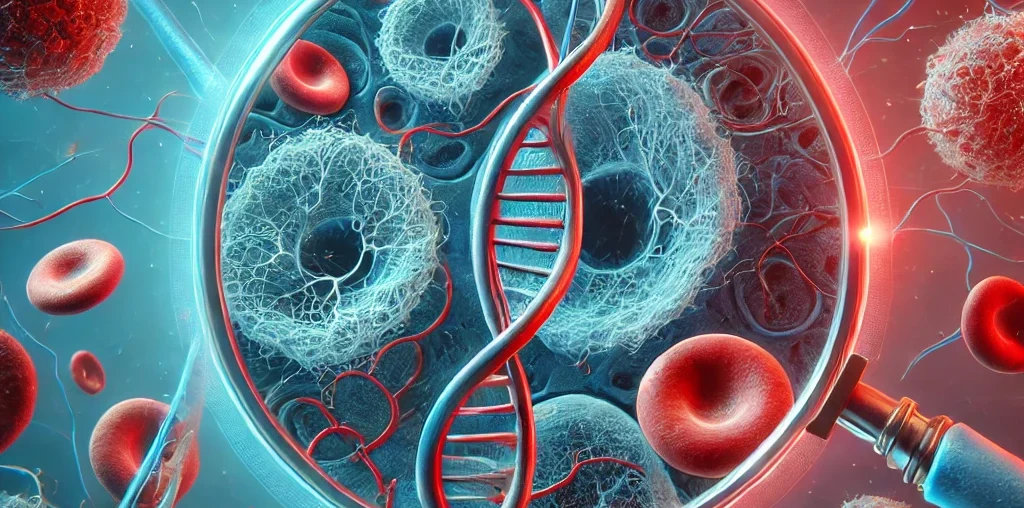Fabry disease is a rare genetic disorder that affects multiple organs in the body, including the heart, kidneys, and nervous system. It is caused by mutations in the GLA gene, leading to a deficiency of the enzyme alpha-galactosidase A, which results in the accumulation of harmful substances in the body.
Hoechst Pakistan Limited, a leader in the pharmaceutical industry, is committed to raising awareness about rare genetic disorders like Fabry disease. Through research and advanced healthcare solutions, the company aims to improve the quality of life for patients suffering from lysosomal storage disorders.
What is Fabry Disease?
Fabry disease is an inherited metabolic disorder classified under lysosomal storage diseases. It primarily affects the body’s ability to break down a specific type of fat known as globotriaosylceramide (Gb3 or GL-3). As a result, harmful deposits accumulate in various organs and tissues, leading to progressive damage over time.
Types of Fabry Disease
Fabry disease presents in two main forms:
- Classic Fabry Disease: Symptoms usually begin in childhood or adolescence, with progressive complications affecting the kidneys, heart, and nervous system.
- Late-Onset (Atypical) Fabry Disease: Symptoms appear in adulthood, often affecting specific organs such as the heart or kidneys without the early symptoms seen in the classic form.
Causes and Risk Factors
Fabry disease is caused by mutations in the GLA gene, located on the X chromosome. This gene is responsible for producing the enzyme alpha-galactosidase A (alpha-Gal A), which breaks down certain fatty substances.
Since the disease is X-linked, it primarily affects males more severely, while females may experience a milder form of the disorder due to the presence of a second unaffected X chromosome.
Symptoms of Fabry Disease
The symptoms of Fabry disease vary widely, depending on the severity and type of the disorder. Common signs include:
- Pain and Burning Sensations: Nerve pain in the hands and feet, known as acroparesthesia, is one of the earliest symptoms.
- Skin Lesions (Angiokeratomas): Small, dark red spots typically appear on the lower abdomen, buttocks, and thighs.
- Gastrointestinal Issues: Chronic diarrhea, nausea, and abdominal pain are common.
- Cardiac Problems: Irregular heartbeats (arrhythmia), heart enlargement, and an increased risk of heart attacks.
- Kidney Dysfunction: Progressive kidney failure due to the accumulation of waste products.
- Hearing and Vision Issues: Hearing loss, tinnitus (ringing in the ears), and corneal opacities.
- Heat and Cold Intolerance: Difficulty in regulating body temperature.
- Dizziness and Stroke-like Symptoms: Due to reduced blood flow to the brain.
Diagnosis of Fabry Disease
Early diagnosis is crucial to prevent complications. Several tests can help confirm Fabry disease:
- Enzyme Assay Test: Measures the level of alpha-Gal A enzyme activity in the blood.
- Genetic Testing: Identifies mutations in the GLA gene.
- Urine and Blood Tests: Detect abnormal levels of stored lipids.
- MRI and Echocardiogram: Evaluate organ damage, especially in the brain, heart, and kidneys.
Treatment Options for Fabry Disease
Although there is no cure for Fabry disease, various treatments can help manage symptoms and slow disease progression:
1. Enzyme Replacement Therapy (ERT)
ERT involves regular intravenous infusions of recombinant alpha-Gal A enzyme to compensate for the body’s deficiency. Common ERT drugs include:
- Agalsidase alfa (Replagal)
- Agalsidase beta (Fabrazyme)
2. Chaperone Therapy
For certain genetic mutations, chaperone therapy with migalastat (Galafold) helps stabilize the enzyme and improve its function.
3. Medications for Symptom Management
- Pain Relief: Anticonvulsants and neuropathic pain medications such as gabapentin and carbamazepine.
- Heart Medications: Beta-blockers and ACE inhibitors for cardiovascular complications.
- Kidney Support: Dialysis or kidney transplantation in advanced cases.
- Gastrointestinal Management: Probiotics and dietary modifications.
4. Lifestyle Modifications
- Following a low-fat, low-sodium diet to reduce kidney and heart complications.
- Engaging in low-impact exercise to improve circulation.
- Avoiding extreme temperatures to minimize discomfort.
Role of Hoechst Pakistan Limited in Fabry Disease Management
Hoechst Pakistan Limited is at the forefront of developing innovative treatment solutions for rare genetic disorders like Fabry disease. The company collaborates with healthcare professionals and researchers to improve diagnostic methods, provide advanced enzyme therapies, and enhance patient awareness.
With a commitment to improving the lives of those affected, Hoechst Pakistan Limited supports initiatives to facilitate early detection and better management strategies for Fabry disease patients in Pakistan.
Conclusion
Fabry disease is a serious yet manageable genetic disorder with advancements in medical treatment. Early diagnosis and appropriate management, including enzyme replacement therapy and lifestyle modifications, can significantly improve the quality of life for patients.
With leading pharmaceutical companies like Hoechst Pakistan Limited advocating for better healthcare solutions, individuals with Fabry disease can access the latest treatments and medical support. If you or a loved one experiences symptoms of Fabry disease, consult a healthcare professional for early diagnosis and appropriate treatment.


